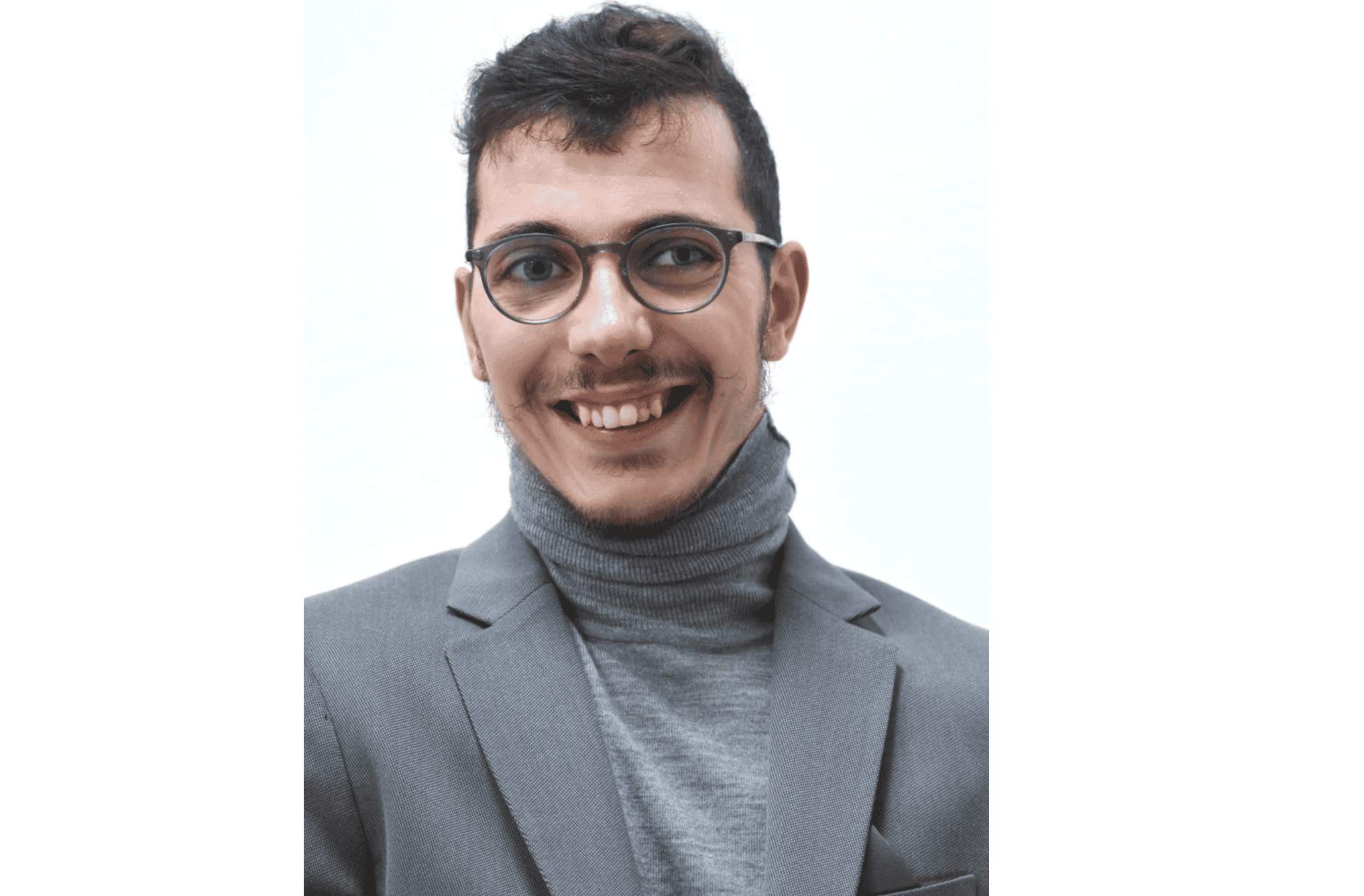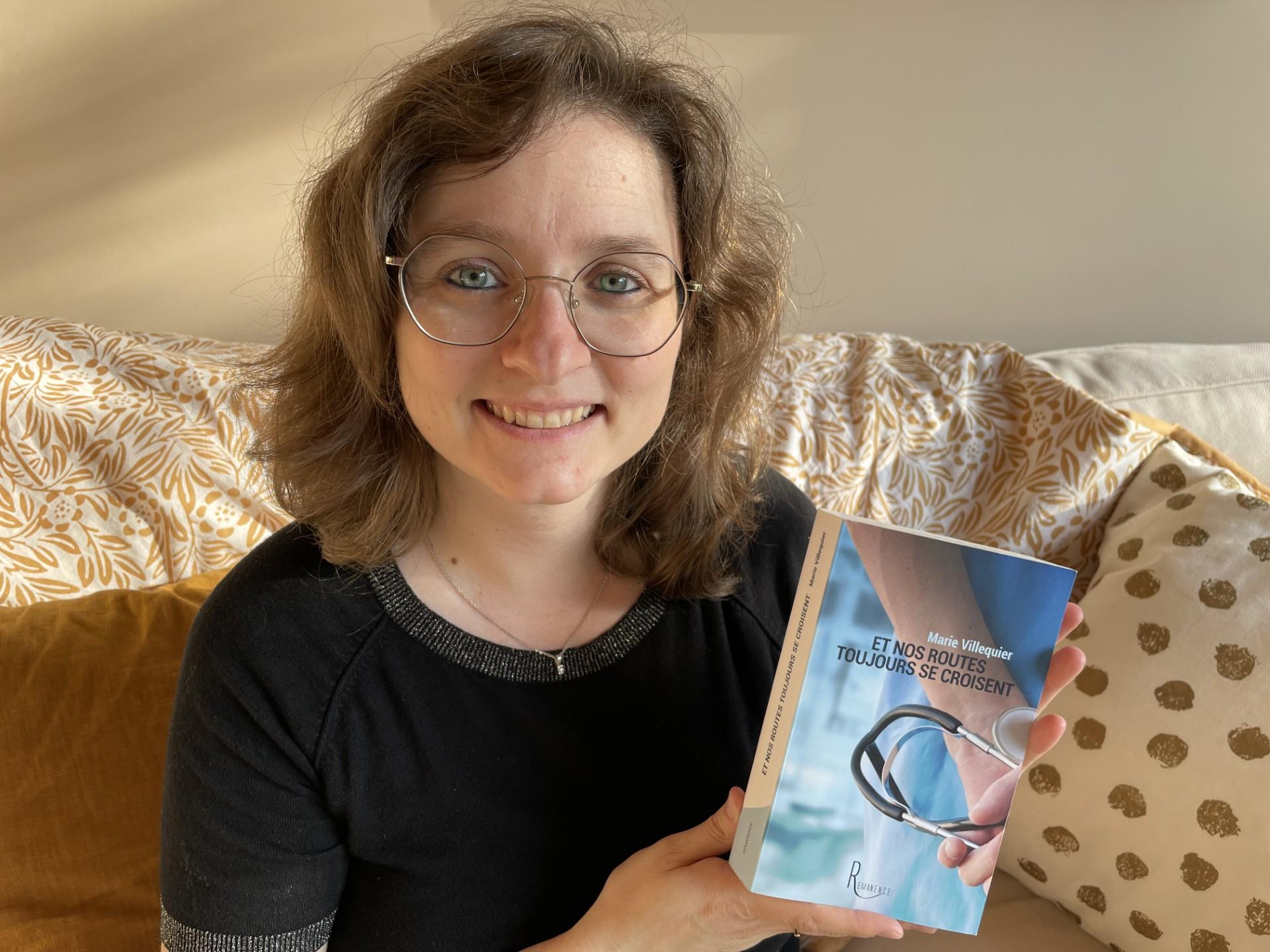Marc Joubert discovered at the age of 64 that his left eye was affected by exudative AMD, also called wet AMD. He confides in us about this disease that has been part of his life for 14 years.

- Marc started to feel discomfort in his left eye when he retired, then a spot appeared in the center of his vision. He consulted when he saw a pole zigzagging.
- Tests revealed he had wet AMD.
- Thanks to the treatments, he has regained much of his visual acuity.
Age-related macular degeneration (AMD) is the leading cause of visual impairment in people over 50 in France, with more than a million people affected. Marc Joubert, a member of the DMLA association, is one of them.
“I have exudative AMD, also called wet AMD, in my left eye. My right eye is intact.“, explains the 78-year-old. This form of the disease is characterized by the proliferation of new blood vessels in the macula, an area of the retina. These are fragile and can leak fluid and blood. It is this characteristic that gives this insidious eye disease its name.
AMD: “I got worried when I saw a deformed electric pole”
AMD entered Marc Joubert’s life without warning.I was 64 years old. I wore glasses and at first I felt some discomfort in my left eye, especially when I was reading. But I didn’t really worry, I thought I needed to have my glasses remade. In reality, my right eye compensated for the left so I didn’t feel like I had a problem.”explains the Val-de-Marne resident.
Later, a small dark spot began to appear in the center of his vision when he was in dim light. Not knowing the symptoms of AMD, the phenomenon did not lead him to seek medical attention.
“I got really worried when I saw a deformed electric pole. It was zigzagging. I went to an emergency department of a Parisian hospital. I had an appointment with an ophthalmologist. He asked me to draw the spot I saw. He also had me have several eye exams like a fundus scan and an OCT (Optical Coherence Tomography)”remembers Marc. These latter made it possible to put a name to these visual disorders: exudative AMD in the left eye.
AMD management: “I only had a tenth of my eye left”
For Marc, the announcement of the diagnosis is a very important moment in the patient’s journey. “It happens at a time when we don’t know about the disease. We only know that it affects an organ essential to sight and life. Very quickly, we fear going blind.”he remembers.
Today, an expert patient, he believes that “This fear must be addressed by the quality of the interview and the information given by the doctor”. When he looks back on this period, Marc recognizes that he would have needed more information on the pathology and its care. “I was in a state of anxiety.”
Beyond the stress of the illness, he had to deal with another distressing element: waiting. “Between the announcement and the actual treatment, two or three months passed. As time went on, my visual acuity declined and my anxiety increased.”
“When I was told that I was going to have an injection in my eye, I was almost happy. My vision had declined rapidly, I only had a tenth of it left in my eye.”
Why such a long delay? In the 2010s, eye exams took a long time. “For an appointment, you had to spend almost a whole morning. Fortunately, the care has improved enormously today.”
During the wait, Marc read up on his illness and learned more about it. On the advice of a friend’s father who was an ophthalmologist, he went to the Créteil intercommunal hospital, a center of excellence for AMD.
“I made an appointment with Professor Eric Souied, who is an expert in AMD. I remember his first words when we met. He told me, “you did well to come and see me.” These are comforting words. At that moment, my care changed completely. I had tests, information…”
AMD and IVT: “The procedure is not very painful, very quick and very important”
Furthermore, Marc was fortunate to be one of the patients who regained visual acuity with the treatment. “My visual acuity has been a bit of a yo-yo: I was gaining and then losing. But gradually, it’s improving. After 3 or 4 years, I regained some visual acuity. Today, it’s almost 8.”
“I kept a relatively light handicap, he recognizes. I suffer from glare and fatigue when reading. My vision becomes blurred, which makes DIY and detailed activities difficult. Night vision is difficult.”
The intravitreal injections (IVT) that allowed his vision to improve by almost 7 points are often a source of worry for patients, especially the first few times. But Marc Joubert wants to reassure them. “The procedure is not very painful, very quick and very important because it slows down the disease and in many cases improves vision.”
Although Marc has been able to regain a good part of his vision in his left eye, he still has regular relapses. “I don’t hide the fact that I’ve had periods of discouragement in 14 years. It’s not always easy to juggle appointments to organize our projects, our vacations, our trips. There are moments of discouragement.”
Wet AMD: “the role of the caregiver is crucial”
How did he overcome these darker periods? Thanks to his wife first and foremost. “The role of the caregiver is crucial, because they provide support and help on a daily basis. As my disability is mild, I can go to my appointments alone and my wife did not feel like I was a caregiver. But she was through her daily support and also when she encouraged me to take time – to the detriment of other family projects – to join the DMLA association.”
This association is the other element that helped Marc. He notes that it allowed him to tame his pathology.
“I wasn’t involved in the voluntary sector at all before. I didn’t feel the need to meet the AMD association, but my doctor insisted. I started attending one or two meetings. I met volunteers who had more severe disabilities than me. But they were also much more dynamic and optimistic than I could have been at the time.”
“The contact and discussions I was able to have with the other patients in the association allowed me to distance myself from the illness and cope with it better.”
For him, we should not hesitate to approach associations and other patients.
Symptoms of AMD: “If we don’t know them well, we let them pass”
In addition to talking to associations, Marc advises not to hesitate to ask your ophthalmologist questions. “As doctors have their heads down, they don’t necessarily think about going into detail. So don’t hesitate to say to them: I’d like to take stock with you. The patient must be present in their pathology. And that involves, among other things, obtaining explanations to fully understand AMD.”
Other tips, this time, to prevent or slow down the disease that causes vision loss: adopt a Mediterranean-style diet. Rich in fruits, vegetables, legumes, whole grains, olive oil and oily fish, it is known to be beneficial for eye health.
And above all, “You should see your ophthalmologist every year from the age of 55”Marc insists.
“From this age onwards, you have to be aware that there are insidious pathologies. The signs – such as the distortion of objects and straight lines, a decrease in visual acuity, spots in the central part of the field of vision or even difficulties in reading – if you are not aware of them well, you let them pass like me. However, reactivity is an important factor in this disease. The earlier you are taken care of, the more it will be possible to slow down the disease” he explains.












-1739366311.jpg)






